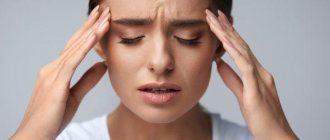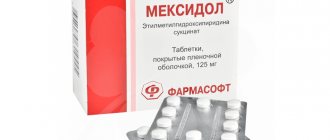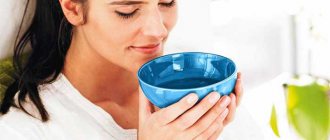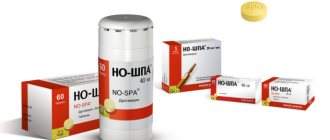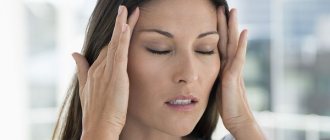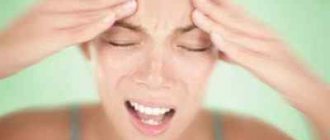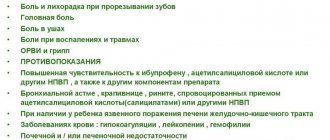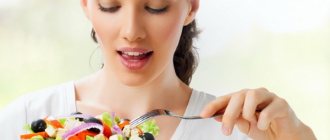Migraine is a disease that is accompanied by headaches. The strength and frequency of attacks largely depends on lifestyle, in particular on nutrition. Therefore, diet for migraine is important as part of a comprehensive treatment.
Some foods can trigger migraines, while others can help cope with them. A properly selected menu is no less important than drug treatment.
Complex for strengthening the muscles of the buttocks –
How to eat
First of all, it is worth saying that a diet for migraines alone cannot completely cure the disease. It must be used in combination with other treatment methods. But there is no need to underestimate the role of nutrition on the path to recovery from migraines. Everyone knows that a person is what he eats. If the food is healthy, the disease will gradually recede.
We list the main groups of products that help relieve migraine attacks:
- Fruits and vegetables familiar to the patient’s place of residence. Can be consumed both raw and heat-treated.
- Porridge, preferably buckwheat and oatmeal.
- Green and herbal teas.
- Raisins, dried apricots, prunes.
- Lean meats.
- Seafood, fish.
- Dairy products.
- Sunflower oil, olive oil.
- Fresh juices, jelly, homemade compotes.
- Mushrooms, especially butter mushrooms, honey mushrooms, white mushrooms.
- Almonds, pine nuts.
- Sea kale, sorrel, spinach.
Worth remembering! When frozen, meat concentrates a compound that causes headaches. Therefore, when purchasing it, you should give preference to fresh products.
Miracle herb for health
Koporye or fireweed tea is a storehouse of useful substances. A large number of vitamins, tannins, amino acids, antioxidants strengthen the immune system, improve all types of metabolism, normalize hormonal balance, which is undoubtedly very useful for migraines as a preventive measure.
Ivan tea is a wonderful sedative and hypnotic, therefore, herbal tea made from it will be useful if the disease is psychosomatic in nature and develops due to stress or sleep disturbances.
Migraines can be caused by circulatory disorders in the brain, and here fireweed will also be indispensable as a preventive remedy that helps restore the circulatory system, strengthening blood vessels and renewing the blood.
Thanks to magnesium, alkaloids, polysaccharides, bioflavonoids, fireweed tea can be used as an additional pain reliever for migraines. In addition, fireweed lowers blood pressure, which can also help during an attack.
To relieve pain during a migraine attack, the following option is recommended:
Peppermint, oregano, dry fireweed herb - pour one tablespoon of each herb into 250 ml of boiling water and, cover with a lid, leave for about an hour. Then strain the infusion, squeeze it out and drink a glass right away. When combined with traditional pain relievers, this method should provide accelerated relief from migraines.
Also, to enhance the properties of fireweed for migraines, oregano, mint, as well as St. John's wort, nettle and thyme can be added to fermented herbal tea. This is not only healthy and brings relief during attacks of pain, but also much tastier than traditional tea and coffee!
Diet for migraines
In order to avoid migraine attacks, you will need to reduce the amount of consumption of certain foods. There is also a food that you need to get rid of from your diet once and for all. Let's take a closer look at each group.
What's prohibited
A migraine diet excludes the following foods from the patient’s menu:
- smoked meat and fish, smoked and raw smoked sausages;
- products based on kidneys, liver, stomachs, hearts;
- any alcohol-containing products;
- fatty pork and lamb;
- roasted almonds, salted peanuts;
- caviar of any fish;
- hard cheeses;
- pies, pastries;
- mayonnaise, fatty sauces.
Product restrictions
The following foods are allowed on the diet in limited quantities. Everyone has their own individual norm. So, you should not abuse the following foods:
- sweets, chocolates;
- bread, buns, baked goods;
- boiled sausage, frankfurters, small sausages;
- onions, radishes;
- jelly, low-fat meat broths;
- strong coffee, sweet carbonated water;
- high fat dairy products;
- oranges, grapefruit.
Authorized Products
Without restrictions, the migraine diet allows the consumption of the following foods:
- vegetable oils of corn, flax, sesame;
- kelp, prunes, bell pepper;
- melons;
- domestic eggs;
- water soups;
- red rice;
- low-fat dairy products;
- seasonal apricots, apples, cherries;
- herbal teas, fresh juices.
Coffee and headaches
The migraine diet allows for the consumption of small amounts of coffee. Most patients can drink no more than one cup per day. Until recently, it was believed that coffee only harms the body and increases headaches. However, modern research has shown that moderate doses of the drink have a beneficial effect on well-being. The drink activates the activity of the circulatory system, the cerebral cortex, and stimulates mental activity. Accordingly, after using it, headaches subside.
The main thing that people who are prone to migraine attacks should remember is not to overuse the aromatic drink while on a diet. This is due to the fact that caffeine has a vasodilating effect, so it can lead to an increase in blood pressure. This, in turn, can make the situation worse.
It's important to understand the triggers
For most people who experience frequent migraines, there are certain factors that tend to precede or directly trigger an attack. Emotional stress is one of the most important, and an irrational diet is a trigger.
Other provocateurs
- Shift work and sleep disturbances that often accompany stress
- Fragmented or poor sleep
- Obesity or overweight
- Sleep apnea
- Excessive exercise
- Exposure to bright lights or loud noises
- Use of psychostimulants or alcohol
- Dehydration
Excessive consumption of caffeine, such as that found in popular energy drinks, can lead to migraines.
Triggers can vary greatly from person to person. People with migraines are more sensitive to changes in their environment or disruptions to their daily routine. Identifying specific, individual triggers will help you better manage the condition.
Diet for migraine
The main features of nutrition when you have a headache were described above. However, for each group of patients, the migraine diet has its own characteristics. Let's look at them separately.
For adults
For reasons still unknown, migraines most often occur in adults between twenty and forty-five years of age. In this case, experts recommend giving preference to healthy products. For example:
- porridge on water;
- vegetable first courses;
- fermented milk products;
- herbal drinks;
- fresh fruit;
- broccoli, spinach, sorrel;
- fruit juices.
In addition, you should remember the basic rules when eating:
- In the first days of a migraine attack, you are allowed to drink only vegetable juices.
- The diet should become a way of life; if your condition improves, you cannot deviate from it.
- You should forever forget about alcohol-containing products and smoking.
If the disease has a visual aura
The diet for migraine with aura is no different from the diet for classic attacks. However, there are two very important features that must be remembered and in no case ignored when eating with a visual aura:
- you cannot drink coffee and strong teas;
- exclude sweets and any sugar-containing dishes from the menu.
Diet for children
A child’s body is more vulnerable, so diet should not be ignored if a child has a migraine. The following recommendations will help relieve your baby of painful symptoms:
- It is imperative to include lean meats, pumpkin, zucchini, and all types of cabbage in the menu.
- You will need to include tomato, cabbage, and carrot juices in your drinking regimen.
- Herbal teas will be beneficial. Preference should be given to chamomile, lemon balm, and rosehip.
Important! As a child, we often crave something sweet. Therefore, candies and sweets will need to be replaced with dried fruits.
For pregnant
During a migraine while expecting a baby, the diet should be aimed not only at curing the disease, but also at healthy eating in general. This is due to the fact that the fetus completely receives nutrients from the mother’s body. Therefore, you need to create a diet based on the following recommendations:
- you need to give up baking and baking;
- limit your coffee consumption to one cup per day;
- plant foods should be seasonal;
- you will need to limit the amount of pickles and canned food;
- The diet should be based on fresh fruits, boiled eggs, vegetables from the garden, dried apricots, and dairy products.
Important vitamins
For prevention, you can take vitamin complexes. Scientists have found that the following vitamins and microelements help relieve headaches:
- AT 2. Found in mushrooms, salmon, sea bass, lentils and even sardines.
- AT 6. Helps produce serotonin. This substance protects against pain and spasm. Contained in trout, tuna, cod, turnips, asparagus, broccoli, and potatoes that are baked with the skin on. These dietary foods should be included regularly in your diet.
- Magnesium. There are studies that show that magnesium is not produced during times of stress. For this reason, your head may hurt. There is a lot of magnesium in brewer's yeast, nuts, sunflower seeds, and brown rice. It is also offered in tablets.
Substances that cause migraine exacerbation
When buying food, you need to take into account the fact that they can be stuffed with harmful substances that give them an attractive appearance and appetizing aroma. Therefore, it is imperative to read the ingredients on the package. Let's look at what compounds can cause harm during migraines.
Sodium nitrate
Often used to add flavor and a pleasant pinkish tint to sausages, as well as frozen meats and processed meats. The substance, reacting with blood cells, impedes the transport of oxygen to the central nervous system. As a result, the migraine attack worsens.
Monosodium glutamate
Makes any food appetizing. Everyone is familiar with the pleasant smell of chips or Chinese noodles. It is monosodium glutamate that gives it. The substance is addictive, after which other food seems bland and tasteless. The connection negatively affects the functioning of nerve cells. Accumulation in the body provokes migraines.
Tyramine
A toxic substance, found in small concentrations in some natural products, does not cause any harm. When artificially created foods filled with tyramine enter the body, the lumen of blood vessels decreases. This leads to the development of hypertension and interruptions in the functioning of the cerebral cortex. Contained in chocolate, processed cheese, oriental dishes, such as sushi and rolls.
Phenylethylamine
The substance activates the functioning of neurons. Allowed only in small quantities. When intoxicated, it has side effects on mental processes and leads to absent-mindedness. Present in cakes, chocolate products, and some cheeses.
What's prohibited
In 1983, British researchers monitored a group of 88 children suffering from severe migraines. The subject of the study was the diet of young patients. Scientists have removed some foods from the children’s usual diet that were “suspected” of having the ability to intensify attacks.
As a result, the condition of 78 out of 88 improved, and for some, the attacks stopped altogether. When scientists returned the withdrawn foods to the diet, 80 children began to experience relapses of the disease.
The result of the experiment allowed scientists to conclude that dietary factors may be key in the development of migraines in children and adolescents. In adults, avoiding trigger foods reduces the frequency and severity of attacks by 20-50%.
So, what foods are the most dangerous for migraine sufferers? Generally speaking, these are primarily products containing nitrites, the amino acid tyramine, the food additive monosodium glutamate, histamine, caffeine and copper (in large quantities), and simple sugars.
Power Menu and Power Mode
We will give an approximate diet for migraines and write out the menu for the week. Products may be replaced with approved analogues.
Monday
- 7:00. Boiled buckwheat, pear, cottage cheese, chamomile infusion.
- 10:00. A piece of cheese, carrot juice.
- 13:00. Borscht on water, white meat, cucumber, berry juice.
- 18:00. Grated carrots, green tea.
Tuesday
- 7:00. Brown rice, half an avocado, cheese sandwich, cup of coffee.
- 10:00. Compote, a little low-fat sour cream.
- 13:00. Chicken broth, boiled potatoes, boiled fish, dried fruit compote.
- 18:00. Boiled shrimp, broccoli, lemon balm decoction.
Wednesday
- 7:00. Oatmeal with water and raisins, a cup of coffee.
- 10:00. Fruit drink, a piece of cheese.
- 13:00. Rassolnik on water, boiled white meat, tomato, thyme tea.
- 18:00. Pasta, spinach, a piece of rye bread, mineral water.
Thursday
- 7:00. Croutons, peach, lemon balm decoction.
- 10:00. Vinaigrette, a mixture of carrot and pumpkin juices.
- 13:00. Wheat soup, steamed fish, stewed cabbage, compote.
- 18:00. Pancakes, chamomile tea.
Friday
- 7:00. Muesli, milk, black tea.
- 10:00. Cottage cheese, a piece of melon.
- 13:00. Chicken broth, boiled meat, carrot and cabbage salad.
- 18:00. Egg, apple, still water.
Saturday
- 7:00. Brown rice, prunes, cup of coffee.
- 10:00. Low-fat yogurt, dates.
- 13:00. Barley soup, zucchini, sea cocktail, ginger tea.
- 18:00. Pork fillet, tomato and cucumber salad, berry broth.
Sunday
- 7:00. Cereals, peach, black tea.
- 10:00. Sandwich with cheese, berries.
- 13:00. Soup with vegetables, stewed cabbage, steamed fish, mint tea.
- 18:00. Zucchini, a piece of boiled pork, fruit juice.
Advantages and disadvantages
Diet for migraines has more positive aspects. Among them:
- for the diet, foods that are beneficial for the whole body are selected;
- in addition to the relief of headaches, blood pressure levels stabilize, memory improves, and mood improves;
- extra pounds go away along with migraines;
- diet involves giving up bad habits;
- If all recommendations are followed, the diet has a long-lasting effect.
Among the relative disadvantages:
- the treatment menu will only help in combination with other treatment methods;
- psychological discomfort when giving up your favorite foods during a diet.
Stages of the disease
According to its course, migraine is divided into several stages:
- Prodrome (phase that foreshadows the main attack). During this period, several hours (sometimes days) before the main stage, a person’s mood sharply worsens (or, conversely, rises), a strong appetite awakens, he may feel tired, depressed, or exhibit unusual hyperactivity. Surprisingly, during this phase, some people simply “know” that the headache will soon take over.
- Aura . This phase, not the most common, is observed in only 30% of patients with migraine. It is characterized by visual distortions in the form of “blind spots” emanating from the focus to the periphery of zigzags and waves of light, flashes of light. Less commonly, it manifests itself in tactile sensations in the form of numbness or tingling in the fingertips, which moves up the arm, sometimes reaching the cheek or tongue. Sometimes there are difficulties in speaking and finding the right words. The aura rarely lasts longer than half an hour.
- The main phase is a severe throbbing or tearing headache from the inside (usually only in one half of the head, but the whole head can hurt). This stage of migraine is very difficult for most patients, interferes with normal functioning, and is accompanied by nausea, vomiting, and a sharp reaction to light and sound. Because of this, the patient prefers to retire to a quiet, dark room. This pain can last from a couple of hours to several days.
- Permission . At this stage, when the headache goes away, the patient feels irritability, fatigue, and depressed mood, which may not subside for up to two to three days.
So, having studied the features of migraine, you can ask a logical question: “How is it treated?”
In most cases, treatment is symptomatic - painkillers and antiemetics; for acute and frequent attacks, a neurologist can also prescribe medications that relieve migraine syndrome. However, such a disease cannot be completely cured, therefore, it makes sense to know and try to avoid the maximum number of factors that precede attacks.
But the main thing that can be done to reduce the frequency and intensity of migraine attacks is to play sports and strengthen the body. The herb Ivan tea can help strengthen the immune system.
Useful foods for migraines
In addition to the fact that there is a list of foods available for migraines, there are also foods that must be included in the menu. Let's look at what should be included in a diet for migraines:
- ginger;
- fish of the salmon family;
- pumpkin seeds, flax seeds;
- cherries;
- honey;
- chamomile-based decoctions.
The main thing that a person prone to migraine attacks should know is that a diet for migraines will only be useful as part of complex therapy. In order not to harm your health, it is necessary to coordinate actions to get rid of migraines with a medical professional.
Think about meal times
In addition to the foods you eat, think about when and how you eat.
Often for people with migraines, meal timing matters much more than the specific food that triggers a migraine attack. Skipping meals is especially problematic for people with migraines as the body becomes accustomed to a strict schedule. People with migraines who drink coffee every morning should be careful to get up at the same time every day to take in the caffeine in the drink.
It is important not to sleep and not skip morning coffee. The regimen is an excellent strategy for combating migraines.
